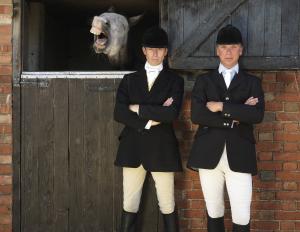
This talk was originally commissioned in 2019 when she was artist in residence at Parham House. A confident, enthusiastic and entertaining Elizabeth Zeschin delighted members with a life in photography presentation. Born in the USA she studied theatre in Chicago before becoming an assistant to a leading theatre and film photographer. Engagements in New York city on many well-known productions and the influence of Bill Brandt in black and white photography enabled her to develop an independent career. Examples of her work “on the job” included Christopher Plummer and Mel Gibson. Photographing actors and film sets she showed early images of Glen Close, Paul Schofield and Helena Bonham Carter. A young Brian Cox in Titus Andronicus at the Royal Shakespeare Company along with Richard Attenborough, Fiona Shaw and Gillian Anderson illustrated the stellar company she photographed.
Advertising engagements followed. Catalogues for Wamsutta sheets and pillowcases required interesting interiors sometimes including bizarre props such as boulders suspended over beds, the reason for which was not clear. In the days of film and before Photoshop the supports for these artefacts had to be invisible or disguised. Lighting too was a critical element. HMI lamps were frequently mentioned, and we learned that these were Hydrargyrum Medium-arc Iodide (HMI) lamps, the trademark name of Osram's brand of metal-halide gas discharge medium arc-length lamp made specifically for film and entertainment applications. Hydrargyrum comes from the Greek name for the element mercury. Engagements for Martha Stewart in the US were especially helpful in Elizabeth’s career not to mention Harrod’s hampers and Connolly leather, used in luxury cars, and Fortnum & Mason.
Overseas engagements for Johnson & Johnson, the pharmaceutical company, took her to exotic places. In Africa she would give polaroid images to children and experience women taking the money for a photograph and then turn their back to her. A TV film for Fuji with the caption “Every day someone switches to Fuji” was shot in Ireland and required her to pay $50 -$100 to everyone who might possibly appear on TV (which made her very popular) also caused problems with Kodak (Fujifilm couldn't prove someone switched every day).
Editorial work for magazines produced a mixture of portraits, interiors and location shots for journals such as Independent on Sunday, Sunday Telegraph, Living etc, House Beautiful and many others. A sandstorm in Morocco was a terrifying experience and ruined the work for the day. At dawn the following day images taken from the back of a camel would not have been possible on a horse in Devon, for example. A different experience was a project involving the parents of murdered children.
Portraiture and gardens also figure in her work as well as salt and cyanotype printing. Her project practices involved always taking two rolls of film at a time so that if one version was affected during the darkroom processing from a power cut, for example, a backup version was available. Counting the bags of equipment on trips was essential. Nevertheless, bags, including those full of film, went missing to various degrees of panic on occasions. Digital photography, forced on her eventually by commissioning publishers, reduced the impact of this problem. She always asked children not to smile for photographs to avoid the cheesy grins. The same technique was applied for a shot of grooms at a stable (illustrated), but the horse clearly had not got the message. Even when the requirement was for colour she shot black and white film for herself, such was her commitment to the medium. Her use of what she called the "boil in the bag" method of pushing Tri-X to 3200 ASA gave striking large grain high contrast results which Elizabeth used to great effect.
